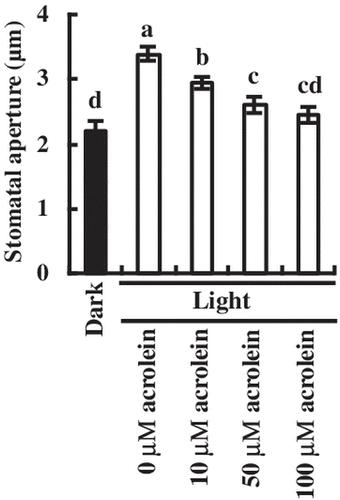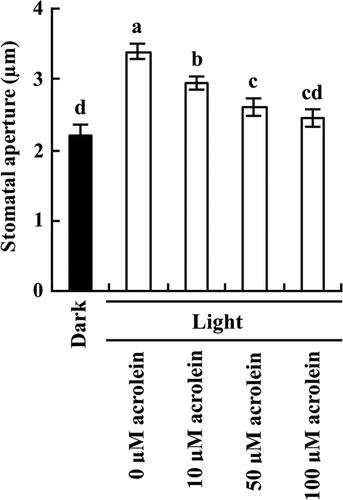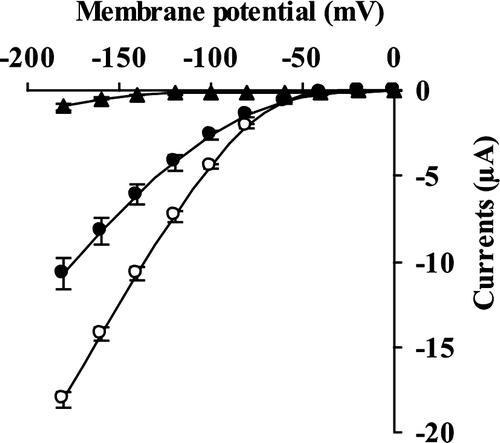Figures & data

Fig. 1. Inhibition by acrolein of light-induced stomatal opening in A. thaliana.
The rosette leaves were incubated for 2 h in the dark (black bar) and then were incubated for 3 h in the light (80 μmol m−2 s−1) followed by addition of acrolein (white bars). Bars having same letters do not differ significantly at the 5% level (one-way ANOVA with Tukey test). Averages for three independent experiments (60 stomata per bar) are shown. Error bars represent SEM.

Fig. 2. Inhibition by acrolein of Kin channel currents in GCPs of A. thaliana.
(A) and (B), Whole-cell recordings of Kin channel currents in GCPs treated with 0 μM acrolein (A) or with 100 μM acrolein (B). (C), Steady-state current-voltage relationship for acrolein inhibition of Kin channel currents in GCPs as recorded in A and B. The voltage protocol was stepped up from 0 mV to –180 mV in 20-mV decrements (holding potential, –40 mV). GCPs were treated with acrolein for 2 h before recordings. Each datum point was obtained from at least seven GCPs. Error bars represent SEM.

Fig. 3. Suppression by acrolein of KAT1 channel currents in Xenopus leaves oocytes.
Inward currents were recorded from oocytes injected with 50 nl of water (▲) and 50 nl of water containing 2 ng KAT1 cRNA (○, ●). For acrolein treatment, the injected oocytes were incubated in ND96(+) supplemented with 100 μM acrolein (●) for 2 h before recording. The voltage protocol was stepped up from 0 mV to –180 mV in 20 mV decrements (holding potential, –40 mV) with a pulse duration of 3 s. Each datum point was obtained from at least eight oocytes. Error bars represent SEM.

